Growing Austin Green Spaces
December 16, 2022 | By Shoal Creek Conservancy
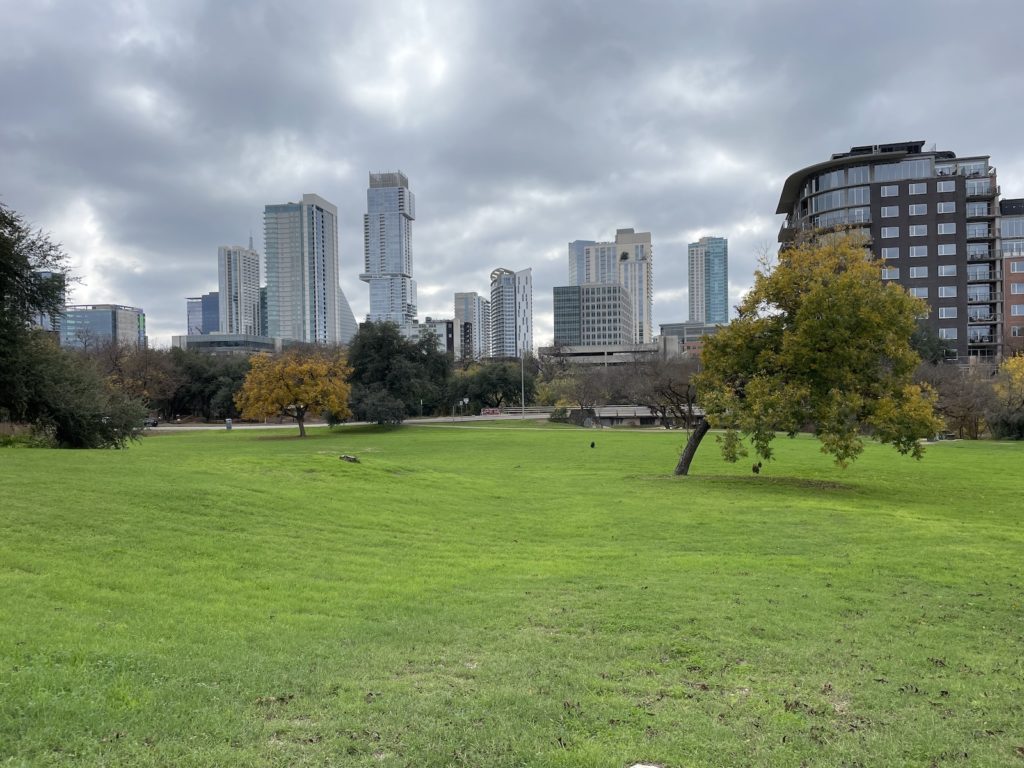
Austin is a green beacon of Texas and is ranked among the most ecological cities in the United States with roughly 15% of its land dedicated to green spaces. Typically thought of as parks, gardens, and urban woods or forests, green spaces are areas of grass, trees, or other vegetation set apart for recreational or aesthetic purposes in otherwise urban environments. Green spaces (and blue spaces like creeks, rivers, lakes, coastlines and other bodies of water) have profound positive impacts on both humans and the environment, and in a city like Austin with ever-growing urbanization, these spaces are becoming increasingly important.
Mental Health Benefits
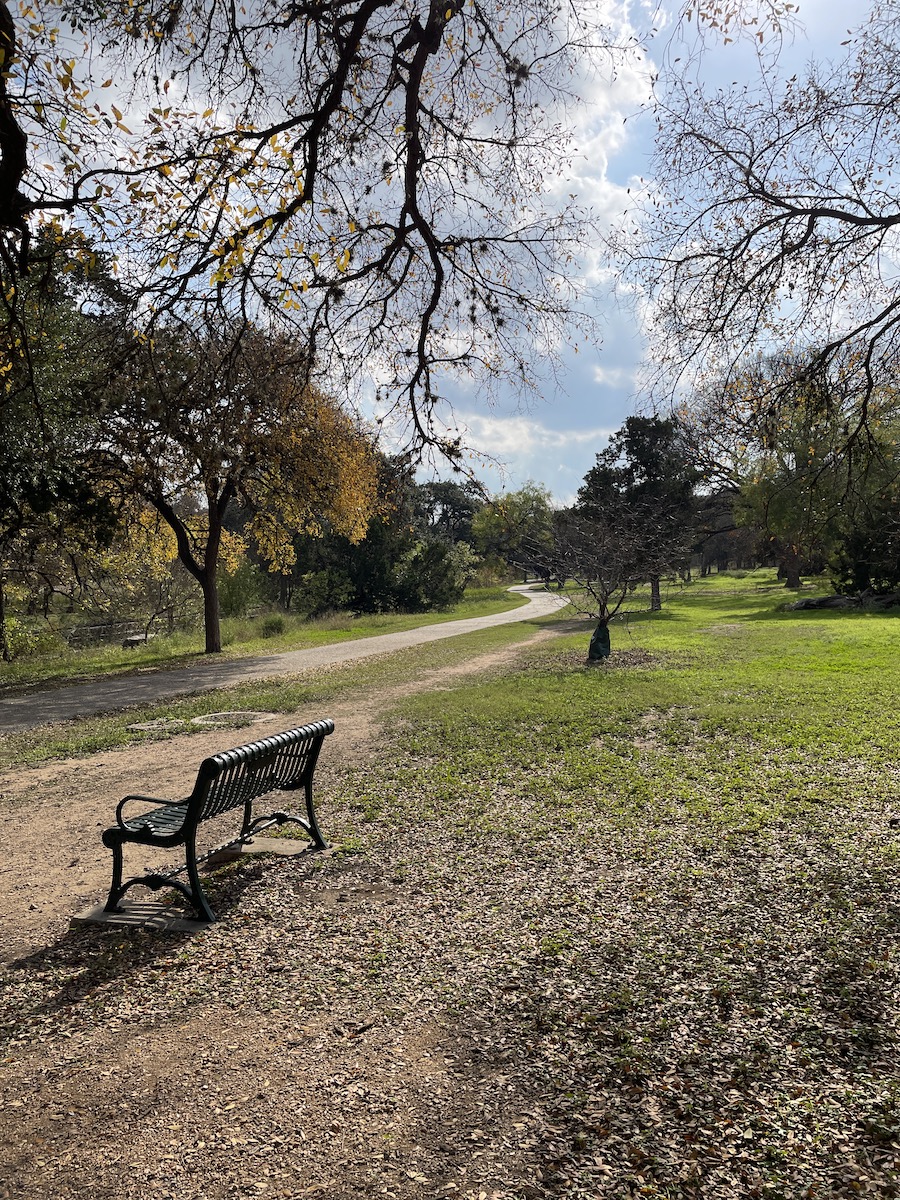
Interaction with nature is essential. Its peaceful and calming effects help reduce stress, improve concentration and cognitive function, and increase positive emotions and mood. Natural spaces also foster a stronger sense of community, offering pleasant areas for social gatherings and relationship building as well as inspiring greater participation in caring for and preserving these spaces. These benefits often result in reduced depression, anxiety, and other mental health conditions.
Due to the limitations of human interaction during the Covid-19 pandemic, including social distancing guidelines and remote work and school, many people turned to green spaces as a way to leave isolation and safely interact with others. A Norwegian study reported that outdoor activity increased by nearly 300% during the pandemic as compared to a few years prior. And a survey taken across US zip codes with varying amounts of green spaces found that during the first six months of the pandemic, people living in areas with more access to green spaces reported lower levels of depression and anxiety, and better mental health in general.
Physical Health Benefits
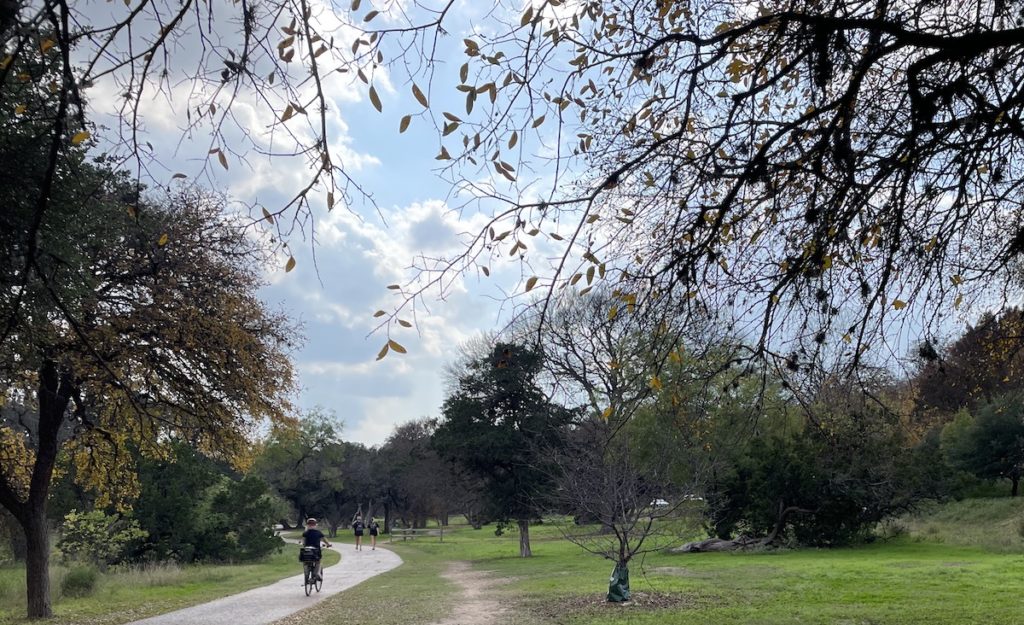
The environmental benefits of green spaces, such as improved air and water quality, reduced noise, enhanced biodiversity and natural habitat, and moderated air and ground temperatures, also impart direct physical benefits to humans and animals. In addition, parks, trails, gardens, waterways and numerous other natural areas encourage recreation and physical activity which has consistently been associated with better metal health outcomes, improved immune functioning, and reduced risk for a multitude of illnesses such as heart disease, diabetes, and cancer.
People living in cities tend to spend more time using cars and electronics and less time being physically active. But people living in the greenest parts of their respective urban areas are more likely to achieve the recommended amounts of physical activity, lowering their risk of health issues related to physical inactivity. In general, long-term contact with nature is linked to longer, healthier lives.
Access to Green Spaces
Although availability of green spaces is incredibly vital to the health of urban populations, not all people have the same access to these areas and the benefits they provide. People of color are more likely to live in an area that is deprived of green space and lower-income communities are more likely to experience nature deprivation as well. These disparities highlight the importance of focusing efforts on making green spaces available to everyone.
Austin’s Green Spaces
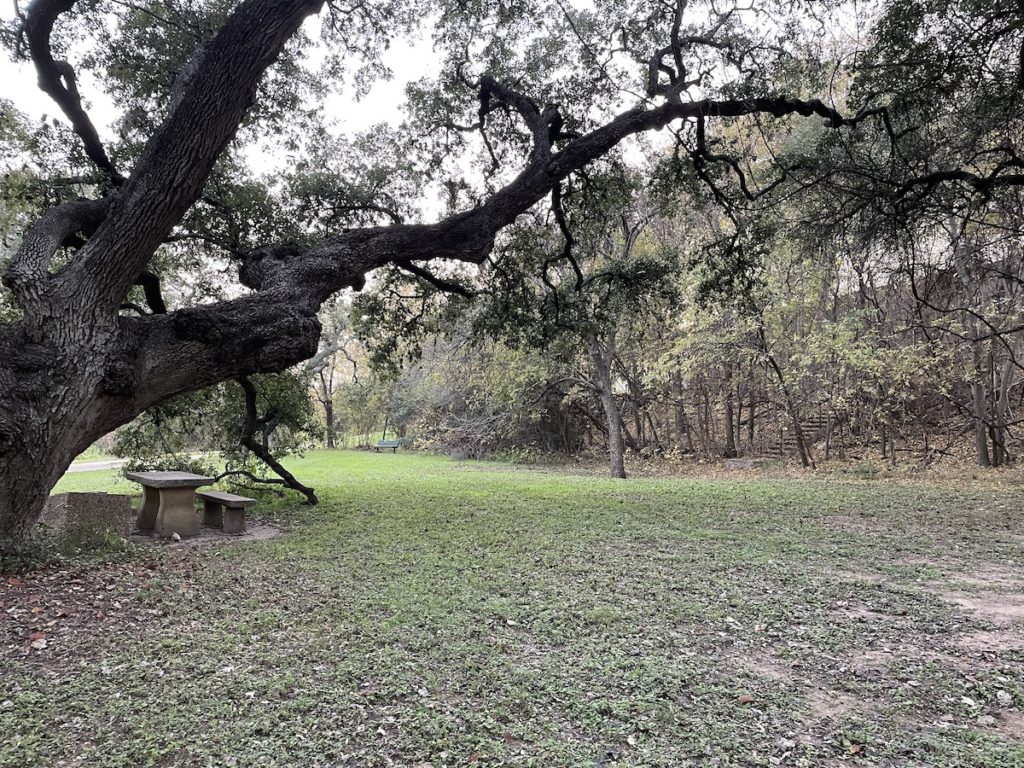
Austin Parks & Recreation Department (PARD) FY21 Annual Report indicates that the city has nearly 20,000 acres of green space across 330 parks and added 33 new parks over the course of the year thanks to the Parkland Dedication Ordinance (PLD) and the 2018 Parkland Acquisition Bond funding. That equates to about 18 acres of parkland per 1,000 residents, which is short of the city’s 24 acres goal, but exceeds the 10 acres per 1,000 residents recommended by the National Recreation and Park Association. And, in 2021, nearly 70% of residents had access to a park or open space, where access is defined as within a 1/4 mile or 5-minute walk for residents in the urban core and 1/2 mile or 10-minute walk for residents outside the urban core.
However, according to the Trust for Public Land, which assesses parkland quality, Austin ranks 39th among the 100 largest US cities, scoring high for investment, but average or below average for park acreage, access, amenities, and equity, such that neighborhoods of color and low-income neighborhoods have less park space available to them.
Austin grows its park system primarily through these two sources, bond funding and parkland dedication fees, with 68% or $20.2 million from bond funds and 32% or $7.8 million from PLD fees since 2018. PARD then uses various criteria to determine where parkland acquisition and development would best serve the community. These factors include areas with high population density and prioritized communities, such as communities of color, lower income residents and children, creek corridors and greenbelt gaps, and park deficient areas that are growing, as shown in PARD’s Park Deficient Area map.
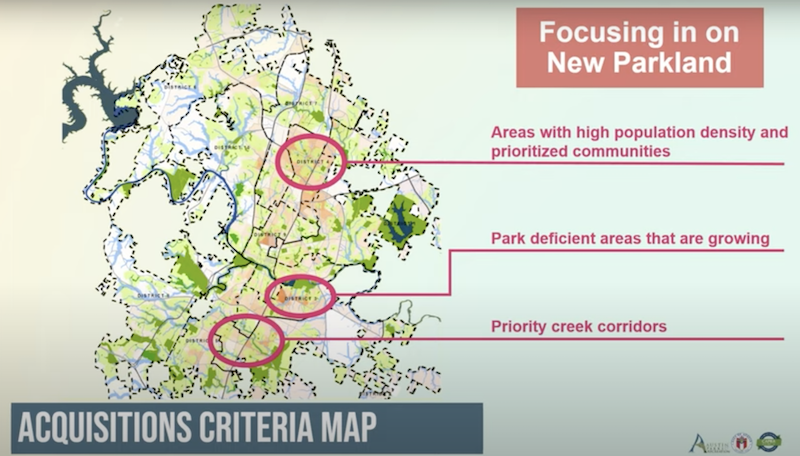
Bonds and PLD funds have allowed PARD to acquire and develop numerous green spaces, and they especially highlight the parkland dedication process and successes through their StoryMap and Parkland Acquisition video. In alignment with one of their overall objectives to equitably provide parkland throughout the city, since 1998, PARD has spent the most money developing parkland and acquiring land on the east side of Austin, as shown by the areas of yellow, red, and pink on the map below.
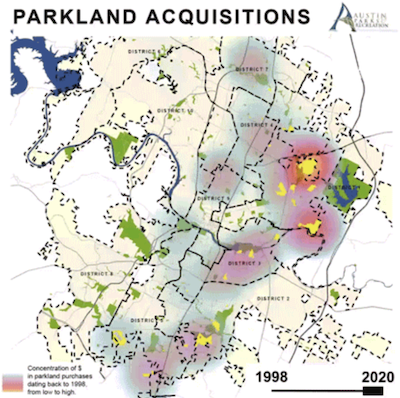
The Parkland Dedication Ordinance expands Austin’s green spaces by collecting either fees or land from residential developers, and now commercial developers and at an increased fee rate after approved by City Council on 9/15/2022. While higher fees required of more developers may hurt both new construction and housing affordability, a particular concern to Austinites, the council decision attempted to balance both livability desires – more green spaces and more affordability. As with most things, it’s a matter of weighing costs and benefits. But, the benefits of green spaces are clear and are worthy of thoughtful investment for our health and the planet’s health for generations to come.
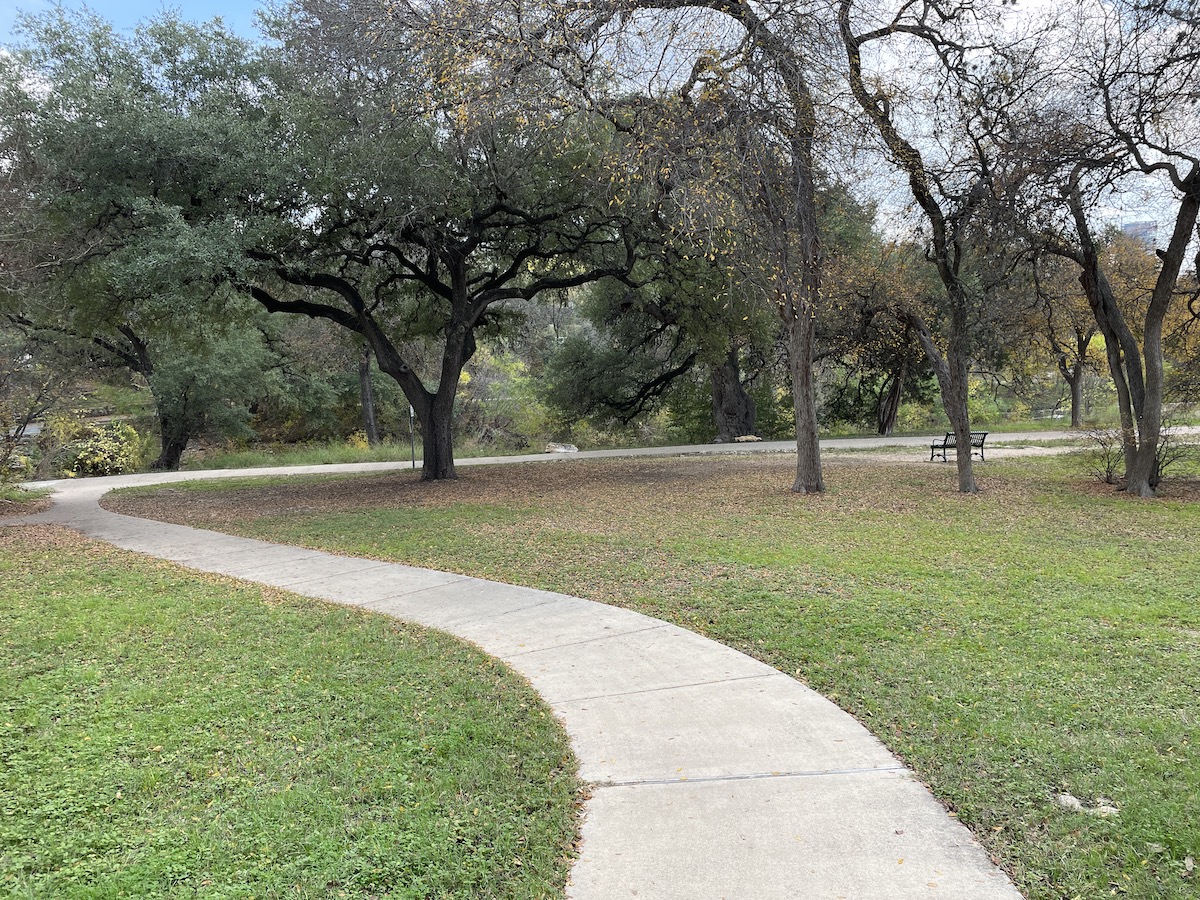
Written with contributions by J’Lynn Estorga, SCC’s Fall 2022 Sustainability Intern
